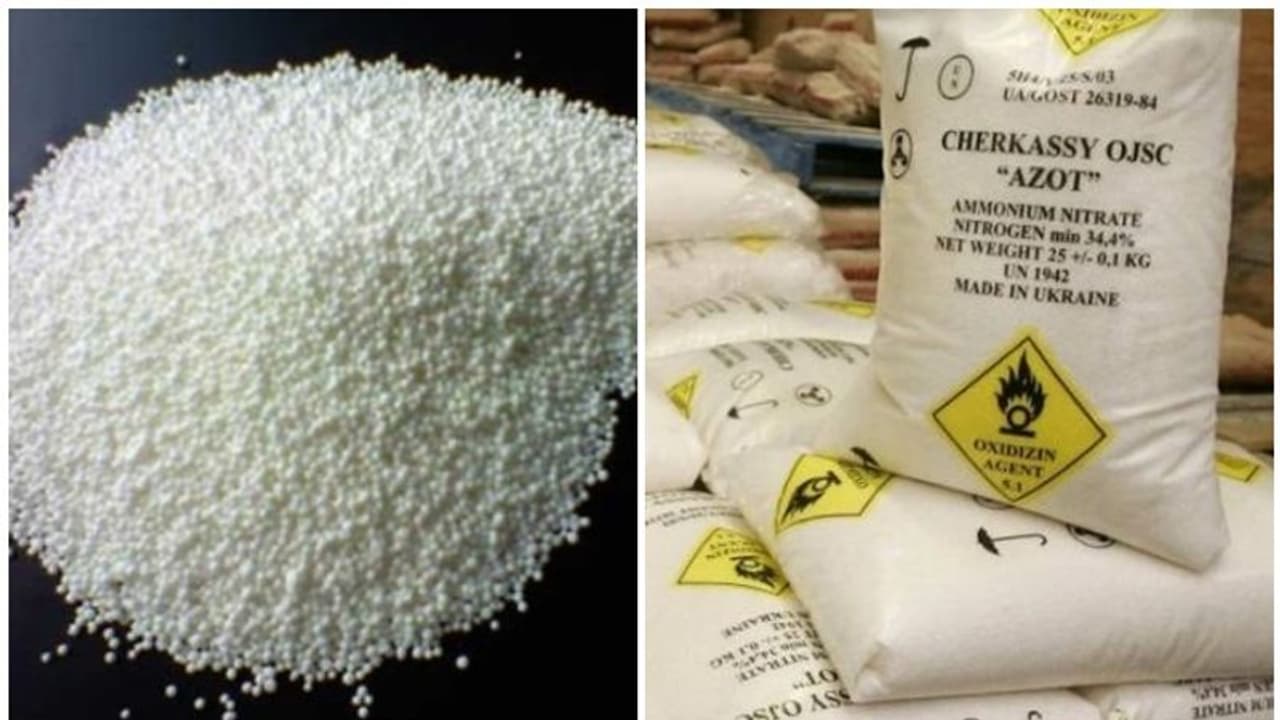The high-intensity explosion that ripped through a slow-moving car near the Red Fort in Delhi was caused by a mix of ammonium nitrate, fuel oil, and other explosives, initial findings in the blast case have suggested.
The high-intensity explosion that ripped through a slow-moving car near the Red Fort in Delhi killing at least nine people and injuring many others, was caused by a mix of ammonium nitrate, fuel oil, and other explosives, initial findings in the blast case have suggested. The blast occurred hours after the recovery of around 360 kg of suspected ammonium nitrate and a cache of arms and ammunition from a Kashmiri doctor’s rented accommodation in Faridabad, bordering Delhi.
Police said that the car, in which the blast took place, had three occupants, adding that they are also probing if it was a suicide bomber attack. “The blast occurred in a moving Hyundai i20 car in which three people were sitting. We have not found any pellet or puncture in the body of the injured, which is unusual in a blast. We are investigating all angles,” a senior police officer said.
The Hyundai 120 car, is linked with Dr Umar who was evading arrest in JeM terror plot.
What is ammonium nitrate?
In simple terms it is a salt consisting of one ion each of ammonium and nitrate that is formed by the reaction of ammonia (NH3) and nitric acid (HNO3), which gives it the formula NH4NO3.
The high levels of ammonium and nitrate content make it an effective and widely-used fertiliser and, because it is a salt, it is water-soluble, making it suitable for use in irrigation systems.
Indeed, much of the world’s food supply still relies on nitrate-based fertilisers.
But it is also an oxidiser, meaning it supplies oxygen to support combustion.
There are two ways ammonium nitrate can detonate.
The first is when it is exposed to fire or it mixes with a combustible substance during a fire, the most horrific recent example of which was in the Lebanese capital of Beirut in August 2020, in which more than 200 people were killed and over 6,000 injured after a fire ignited 3,000 tons of ammonium nitrate.
The substance had been stored in a port warehouse for over six years, Lebanese officials said.
The other way it can detonate is when it mixes with an explosive substance.
Then it becomes a cheaply-made bomb that can cause significant damage.
This version is called ANFO, or ammonium nitrate fuel oil, and is used in controlled scenarios in various industries, such as construction and mining.
In fact, ammonium nitrate can be mixed with almost any kind of volatile substance. But the quality is important, since pure NH4NO3 is chemically and thermally stable, meaning it requires an external detonation. A stronger initial detonation is more likely to result in a larger and more stable explosion.
But, once detonation is achieved, ammonium nitrate’s incendiary character takes over.
It is important to note that NH4NO3 is not a true explosive by itself.
If kept safely, and away from high heat, it is actually quite difficult to ignite. Incorrect storage, though, can lead it to deteriorate, rapidly, and that was the reason behind industrial accidents, like in Beirut.
Is sale of ammonium nitrate regulated in India?
Yes. Under rules framed in 2012, which sit within the Explosives Act of 1884, and “any combination with more than 45 percent of ammonium nitrate by weight including emulsions, suspensions, melts or gels (with or without inorganic nitrates) shall be called an explosive”.
Licenses are required to manufacture and handle the chemical, and there are rules regulating how it is stored, transported, and/or sold. These include restrictions on storing them in populated areas. And, of course, import and export of ammonium nitrate is tightly controlled.
